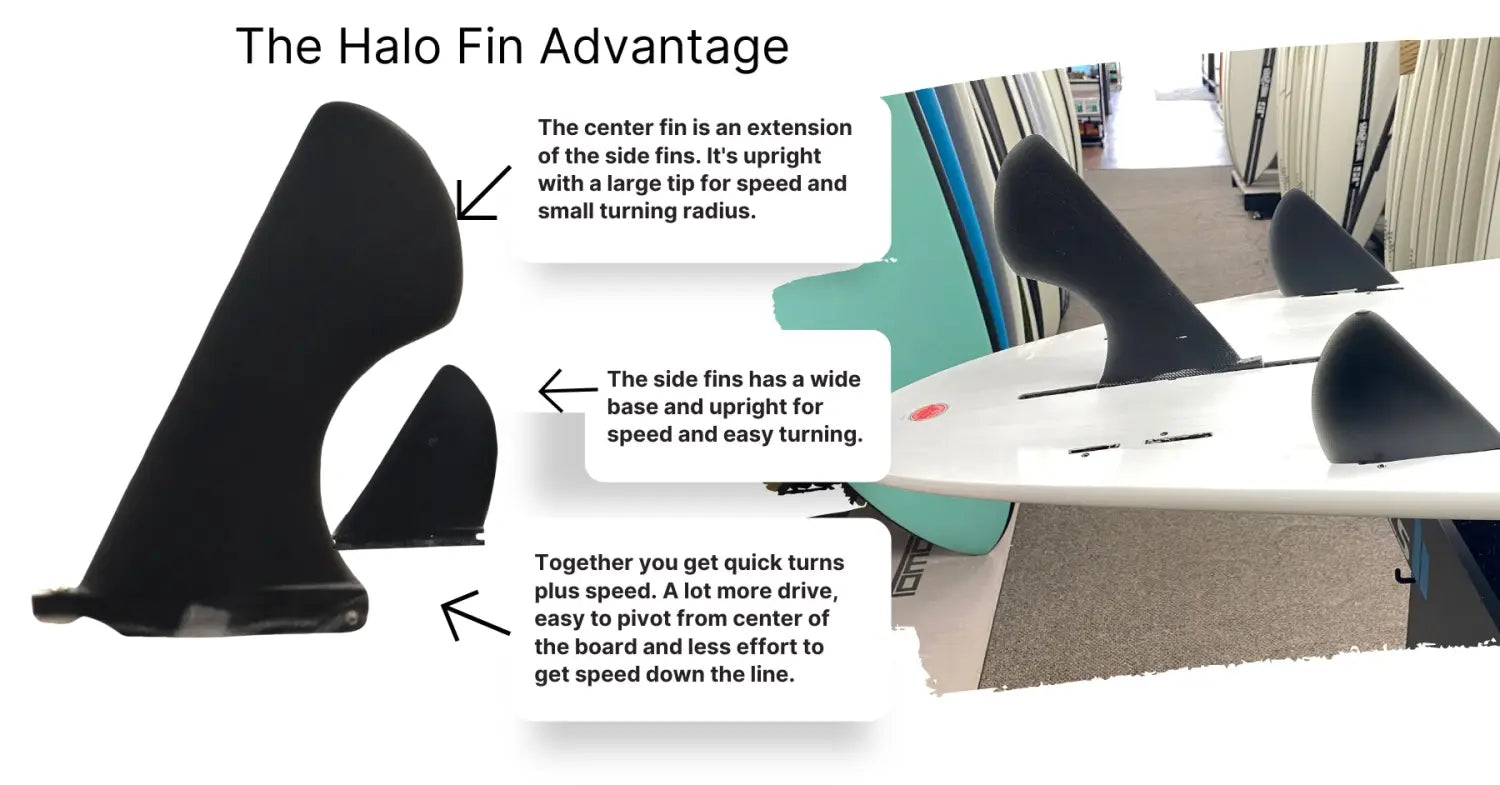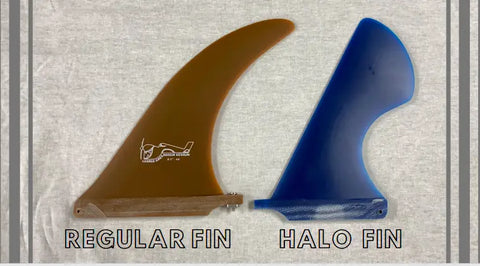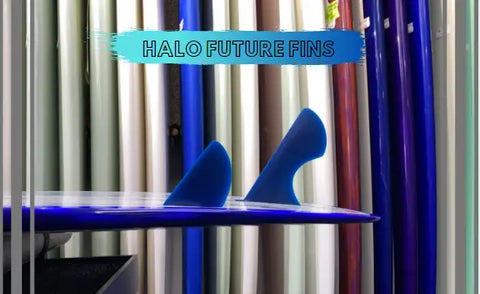The Halo Fin
Share
The Halo Fin Advantage

When he finally nailed the science and perfected the design, it was quintessential Takayama to give it the simplest name possible—Halo, which means “fin” in Hawaiian.
In fact, the center fin can be considered an extension of the side fins. Thus, this isn’t a setup where you want to slap a center Halo onto a board with a pair of random standard fins.


The Halo center fin is an interesting hybrid. In many ways, it resembles the standard pivot fin (which Takayama has also been credited with inventing).
However, if you compare the shape of a side Halo fin to the tip of the center Halo fin, you will find that they are practically identical. In essence, Donald Takayama has taken a side Halo fin and extended it’s length, creating a Halo-ended pivot fin that works in concert with the side fins.
When all of the elements in the Halo setup come together, what you get is a more efficient, faster fin setup that increases drive while also improving the turning radius.
Considering the fact that most fins have to compromise between drive and maneuverability, it would seem that the Halo fin is the mythical silver bullet, providing both, rather than sacrificing one for the other.
And that is exactly what Donald Takayama intended. For those looking to spice up the ride on their modern longboard, SUP, or even mid-length quad, it’s pretty difficult to find a setup more cutting-edge than the Halo Fin.
Performance Benefits
The unique Halo fin design offers performance benefits well-suited for longboards and mid-length boards:
- Tighter turns - The center pivot point allows a tighter turning radius from the middle of the board.
- Maintained speed through turns - Fins don't release and catch, allowing you to carry speed.
- Stability and drive - Side fins add hold while the center fin provides thrust.
- Smooth transitions - No disruptions in fin flow when moving rail to rail.
- Nose riding - Pivoting ability makes walking the nose and hanging ten easier.
- Control - The 360-degree pivot point gives you great control coming off the top of turns.
Ideal Board Styles
The Halo fins are optimized for use on:
- Traditional longboards 8'6'' and above
- Mid-length boards 7'6'' to 8'6''
- Hybrid boards that benefit from extra pivot and drive
Bigger boards allow the extended center fin to really showcase its maneuverability and smooth arcs. The Halo setup can be configured as a 2+1 with side fins or as a single center fin.
Hawaiian South Shore is one of only a few distributors worldwide carrying the Halo Fin. For more info on the design, check out this informative video that Hawaiian Pro Designs head honcho Noah Shimabukuro put together for us here
Shop Halo Fins Here
RELATED ARTICLES:
How To Choose The Right Fin Size For Longboards
